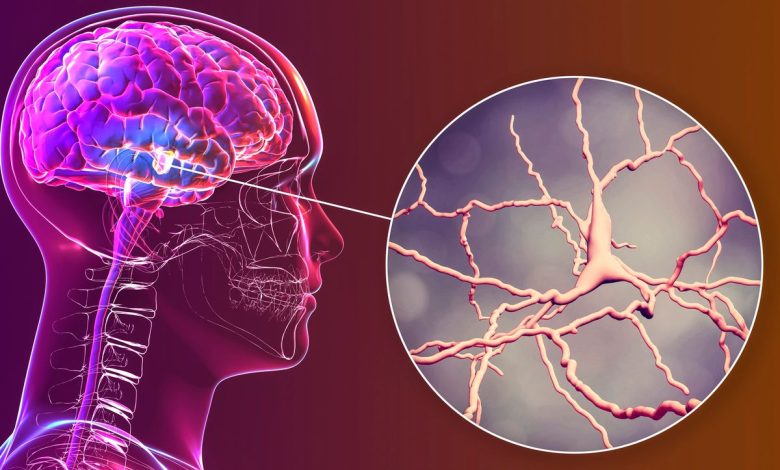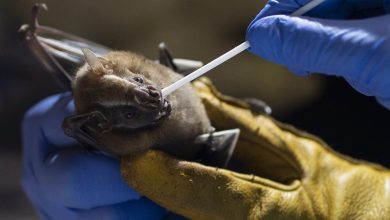Parkinson’s Breakthrough: Why Dead Brain Cells Might Be the Missing Puzzle Piece

Introduction
Parkinson’s disease (PD) is one of the most puzzling and devastating neurodegenerative conditions in modern medicine. Affecting more than 10 million people worldwide, this progressive disorder gradually strips away a person’s ability to control movement, speak clearly, and even perform the simplest daily tasks. For decades, researchers have searched for the root cause and potential cure, yet many questions remain unanswered.
However, a new wave of scientific discoveries is shedding light on the role of dead brain cells in Parkinson’s, and this could signal the long-awaited Parkinson’s breakthrough. Instead of focusing only on dopamine-producing neurons that die off in the brain, researchers are now investigating what happens to these dead cells and how their remains might hold the missing puzzle piece to treatment—and possibly prevention.
Why dead brain cells could be central to understanding Parkinson’s, and discusses what this means for future therapies, including stem cells, immune regulation, and personalized medicine.
Understanding Parkinson’s Disease
Before exploring the breakthrough, it’s important to understand the basics of Parkinson’s:
- What is Parkinson’s disease?
- Parkinson’s is a progressive neurological disorder.
- It is characterized by tremors, stiffness, slow movement (bradykinesia), and balance issues.
- Over time, non-motor symptoms such as depression, sleep problems, and cognitive decline may also appear.
- The role of dopamine
- Dopamine is a chemical messenger (neurotransmitter) critical for controlling movement.
- In Parkinson’s, dopamine-producing neurons in the substantia nigra (a region of the brain) gradually die.
- This leads to the hallmark symptoms of the disease.
- Current treatment limitations
- Most therapies, such as levodopa (L-DOPA), focus on replenishing dopamine or mimicking its effects.
- These drugs reduce symptoms but do not stop disease progression.
- After years, medications often lose effectiveness or cause complications like dyskinesia (involuntary movements).
For decades, scientists believed the main problem in Parkinson’s was simply the death of dopamine neurons. But what if the way these neurons die—and what they leave behind—is the real key?
The New Theory: Dead Brain Cells as the Missing Puzzle Piece
Recent research suggests that dead brain cells aren’t just silent casualties. Instead, they may actively contribute to the disease process. Here’s how:
1. The Toxic Legacy of Dead Neurons
When brain cells die, they release proteins and cellular debris into the surrounding tissue. In Parkinson’s, one of these proteins is alpha-synuclein, which can misfold and clump together.
- Misfolded alpha-synuclein forms toxic aggregates known as Lewy bodies.
- These toxic clumps may spread from one cell to another like an infection, worsening mental health.
- The cycle creates a “domino effect,” where dead cells lead to further neuron loss.
This suggests that dead neurons aren’t just a result of Parkinson’s—they may fuel its progression.
2. The Immune System’s Role
Normally, the brain’s immune cells, called microglia, clear away dead cells and debris. But in Parkinson’s, this clean-up process seems to go wrong.
- Microglia may become overactive, releasing inflammatory chemicals that damage healthy neurons.
- Instead of healing the brain, the immune system worsens cell death.
- This “chronic inflammation” could be a key driver of Parkinson’s progression.
3. A Shift in Focus
For years, treatments targeted dopamine replacement. But if dead cells and their byproducts are causing ongoing damage, the focus must shift. Therapies may need to address:
- Preventing toxic protein spread.
- Controlling inflammation caused by dead cell debris.
- Supporting healthy cell regeneration.
This shift represents the core of the Parkinson’s breakthrough: dead cells are not the end of the story—they are central to understanding and treating the disease.
Breakthrough Research: Key Findings
Several recent studies highlight the importance of dead brain cells in Parkinson’s.
1. Alpha-Synuclein Propagation
- Researchers at Johns Hopkins found that alpha-synuclein released from dead neurons can spread to neighboring cells.
- This “cell-to-cell transmission” mimics the behavior of prions (infectious proteins), raising concerns that Parkinson’s spreads within the brain through dead cell debris.
2. Immune Activation and Inflammation
- Studies show that dead neurons trigger chronic inflammation.
- Blood tests from Parkinson’s patients reveal higher levels of inflammatory markers.
- This suggests the immune system is locked in a destructive cycle, unable to switch off.
3. The Role of Cell Death Pathways
- New evidence suggests a special type of programmed cell death, called necroptosis, plays a role in Parkinson’s.
- Unlike regular cell death, necroptosis releases more toxic debris.
- Blocking necroptosis in animal models reduces neuron loss—offering hope for future therapies.
4. Stem Cell Breakthroughs
- Scientists are experimenting with stem cell therapy to replace dead neurons.
- Early trials show transplanted stem cells can survive, integrate into the brain, and produce dopamine.
- If successful, this could restore lost function—but only if the cycle of inflammation and toxic protein spread is stopped first.
Why This is a True Parkinson’s Breakthrough
This new perspective is revolutionary for several reasons:
- It changes the disease model.
- Parkinson’s is no longer seen as just neuron death.
- It’s about the aftermath of death—the toxic proteins, inflammation, and immune responses that follow.
- It opens new therapeutic targets.
- Instead of only replacing dopamine, therapies can:
- Block toxic protein spread.
- Control inflammation.
- Prevent damaging forms of cell death.
- Instead of only replacing dopamine, therapies can:
- It explains unanswered questions.
- Why does Parkinson’s spread gradually through the brain?
- Why do treatments targeting dopamine alone fail to stop progression?
- Why does inflammation worsen symptoms?
All these puzzles point back to dead brain cells as a critical piece of the picture.
Potential Therapies Emerging from This Breakthrough
With dead brain cells at the center of the disease, scientists are exploring exciting new treatments.
1. Anti-Aggregation Drugs
- Aim: Prevent alpha-synuclein from clumping and spreading.
- Example: Small molecules that stabilize the protein’s shape.
- Progress: Several are in early clinical trials.
2. Immune Modulation
- Aim: Calm overactive microglia and reduce inflammation and lower anxiety.
- Example: Drugs that block inflammatory pathways.
- Progress: Trials show promise in slowing disease progression.
3. Cell Death Inhibitors
- Aim: Block necroptosis and other destructive cell death pathways.
- Example: Necrostatins (experimental drugs).
- Progress: Animal studies show reduced neuron loss.
4. Stem Cell Replacement
- Aim: Replace dead dopamine neurons with new ones.
- Example: Stem cells derived from patients’ skin reprogrammed into dopamine neurons.
- Progress: Early trials in Japan and Europe show encouraging results.
5. Vaccines and Antibodies
- Aim: Train the immune system to attack toxic alpha-synuclein.
- Example: Alpha-synuclein antibodies.
- Progress: Some vaccines are in phase II clinical trials.
The Human Impact
For patients and families, these discoveries are more than just science—they bring hope. Imagine a future where:
- Parkinson’s can be detected early by measuring inflammatory markers or toxic protein spread.
- New drugs slow or stop disease progression instead of just masking symptoms.
- Stem cell therapies restore lost movement, speech, and independence.
This Parkinson’s breakthrough could transform the lives of millions worldwide.
Challenges Ahead
Of course, challenges remain before this knowledge becomes a cure:
- Safety concerns – Blocking inflammation too strongly could weaken immunity.
- Complexity of the brain – Neurons don’t work in isolation; therapies must restore entire networks.
- Early detection – By the time symptoms appear, up to 70% of dopamine neurons are already gone.
- Individual differences – Not all patients progress at the same rate or respond to the same therapies.
Despite these challenges, the shift in focus from dead cells as passive casualties to active drivers is a major scientific leap forward.
Looking Toward the Future
In the next decade, Parkinson’s treatment may evolve from dopamine replacement to disease-modifying therapies that stop or even reverse progression. Key strategies may include:
- Combination therapies: Using anti-inflammatory drugs, protein blockers, and stem cells together.
- Personalized medicine: Tailoring treatment based on genetic and immune profiles.
- Early intervention: Detecting Parkinson’s before symptoms appear and stopping cell death before it spirals.
This future is within reach thanks to the insights gained from studying dead brain cells.
Conclusion
For decades, Parkinson’s has been one of medicine’s greatest mysteries. But today, a clearer picture is emerging. The Parkinson’s breakthrough lies in understanding that dead brain cells are not just bystanders but central players in the disease’s progression.
By unraveling how dead neurons release toxic proteins, trigger inflammation, and fuel further damage, researchers have unlocked new avenues for therapy. This discovery doesn’t just explain the past failures of dopamine-only treatments—it points the way toward a future of real hope.
While challenges remain, the missing puzzle piece may finally be in place. With continued research, collaboration, and innovation, we could be entering a new era where Parkinson’s is not a life sentence but a condition that can be stopped—and perhaps one day cured.




